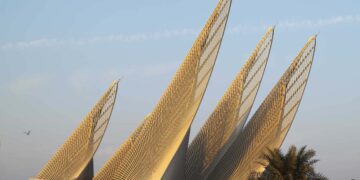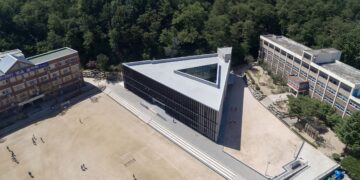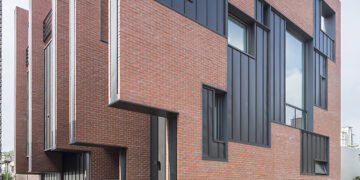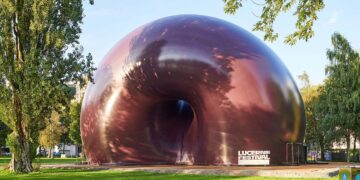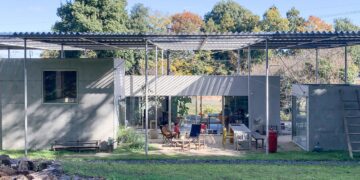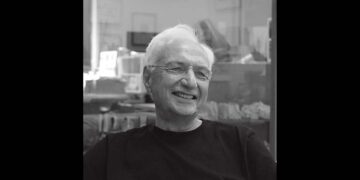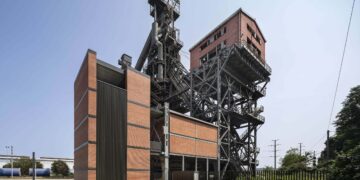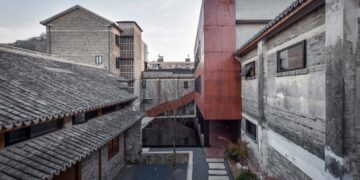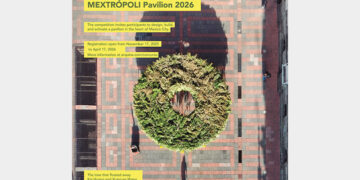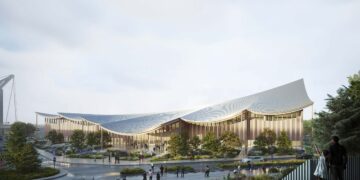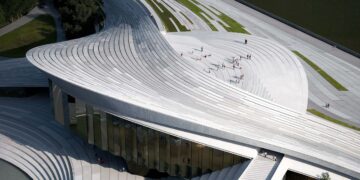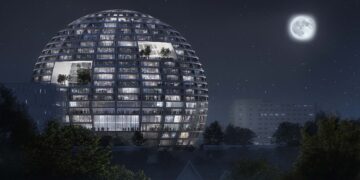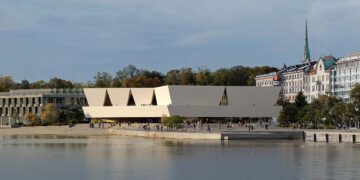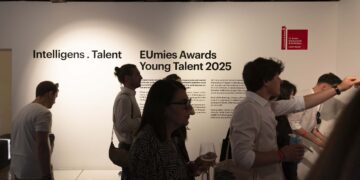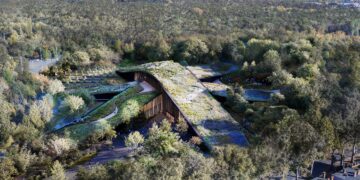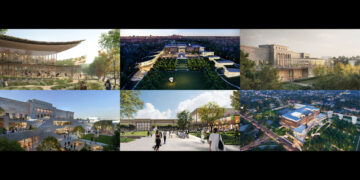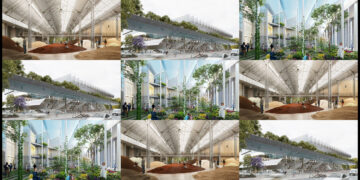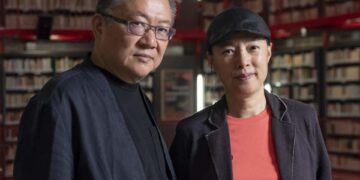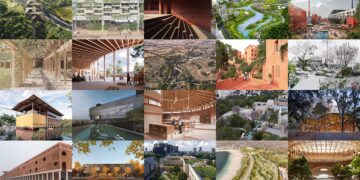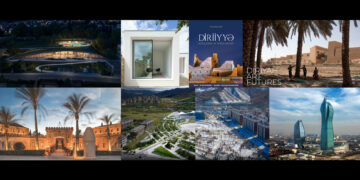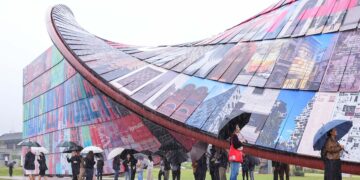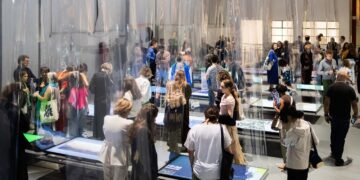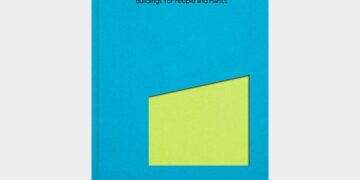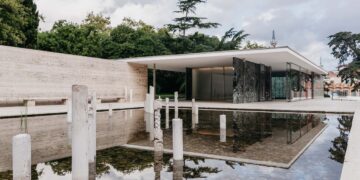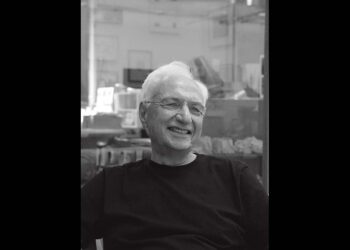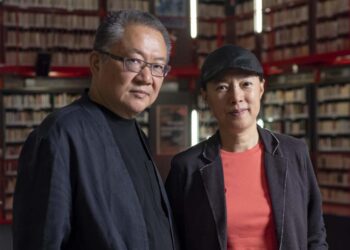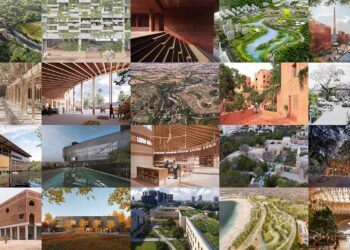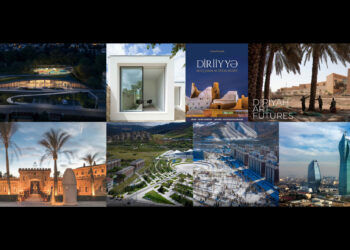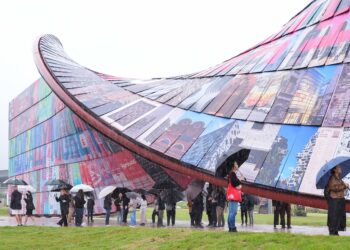Sir Peter Cook, a renowned British architect and founding member of Archigram, visited Korea to present his vision for the future of architecture and its transformation. On November 15, he delivered a lecture at Seoul City Hall, where he introduced Archigram and his seminal works, which have pushed architectural boundaries since the early 1960s. The day prior, on the 14th, he shared his experiences and insights at a lecture celebrating the 50th anniversary of Kookmin University’s College of Architecture, engaging with students on the topic, “How to Become a Young Architect.”
In an exclusive interview with C3 following his lecture at Seoul City Hall, Cook reflected on how Archigram’s innovative ideas have redefined architecture. He also shared his thoughts on the influence of artificial intelligence and digital technology in the field. Cook offered insights on Korean architecture today, and encouraged young architects to embrace diverse cultures and explore unconventional career paths.
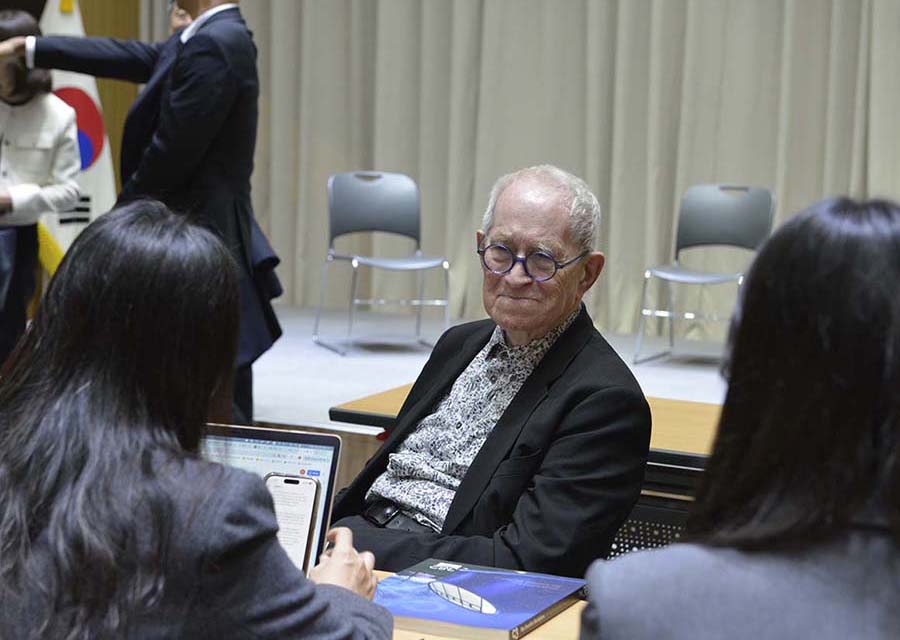

Yumi Hyun: I was the editor in charge when C3 published Bournemouth University’s Drawing Studio in 2016. It’s an honor to see you finally here in Seoul.
Peter Cook: I remember the wonderful cover featuring the Drawing Studio. Thank you.
YH: I’ll start with a question about Archigram. You’re one of the founding members, and it’s been more than 60 years since its creation. How do you believe Archigram has influenced architectural history, and in what ways have its innovative ideas shaped contemporary architecture?
PC: I think our work with Archigram loosened the boundaries in architecture—not just through technology, but in our attitude toward time, vocabulary, and the way we embrace contrasts. We introduced a willingness to combine “the unlike with the unlike,” which was quite different at the time, especially when considering the possibilities of computation.
YH: Archigram also published a magazine, including drawings and collages, with nine issues until 1974. You were a pioneering editor during that time. How would you say the role of editing differs from architectural design?
PC: I quite enjoy editing. In fact, we’ve just put out a new one, the 10th edition. Editing is about exploring diverse perspectives and featuring a broad range of voices. In design, you explore new ideas but narrow them down quickly. With the magazine, it was similar, but we also had to consider our readers—how to invite them to think about the unexpected, the unknown, and the new in architecture. An editor has an easier job in a sense; if readers don’t like it, they simply won’t buy the magazine. But with buildings, people have to use them, so there’s more at stake.
YH: Moving on to technological advancements—particularly in computer graphics and digital drawings—how do you think these developments have impacted architecture?
PC: We were early supporters of new technology, and back then, it felt like we were ahead of the curve. Now, technology has advanced so rapidly that I sometimes feel left behind. For instance, everyone is talking about AI, and I have people in my office using AI to assist with certain aspects of projects. However, the core creative drive still comes from us, not AI. When we built certain projects, we brought in experts from the Netherlands and Germany because we knew the basics but needed their specialized knowledge. I think that’s similar to the role of AI.
YH: Have you tried implementing AI technology in your work?
PC: Yes, but only in specific ways. I set the main direction for our projects, but the adjustments AI provides are more manipulative than fundamental. So far, AI hasn’t played a central role in shaping the core of our designs.
YH: Technology has made some things easier, but what is highly problematic is the attitude change among many architects. They now demand dozens of variations and no longer take the time to think things through, instead going with the flow and seeing what happens. I find myself doing something similar in my writing—using tools like ChatGPT, I spend less time thinking about each sentence or paragraph than I used to. How do you think this change in attitude might affect the future of architecture? Could it lose originality or depth in design?
PC: It’s like what happened with food. As food became more processed, standardized, refrigerated, and microwaved, people started returning to cooking with fresh ingredients and caring about the origins of their food. That trend has even influenced mainstream food production. I think architecture will experience a similar shift.
I think we’ll go through a period where people believe that computers, AI, and similar technologies can handle everything. But as AI and automation become more dominant, people will begin craving buildings that reflect human touch and involvement. I worry that during this phase, we may become conceptually lazy, relying on software to the point that original thinking slows down. I’ve already seen people quickly generate building elevations without much thought. However, I’m quite certain there will eventually be a reaction against this reliance.
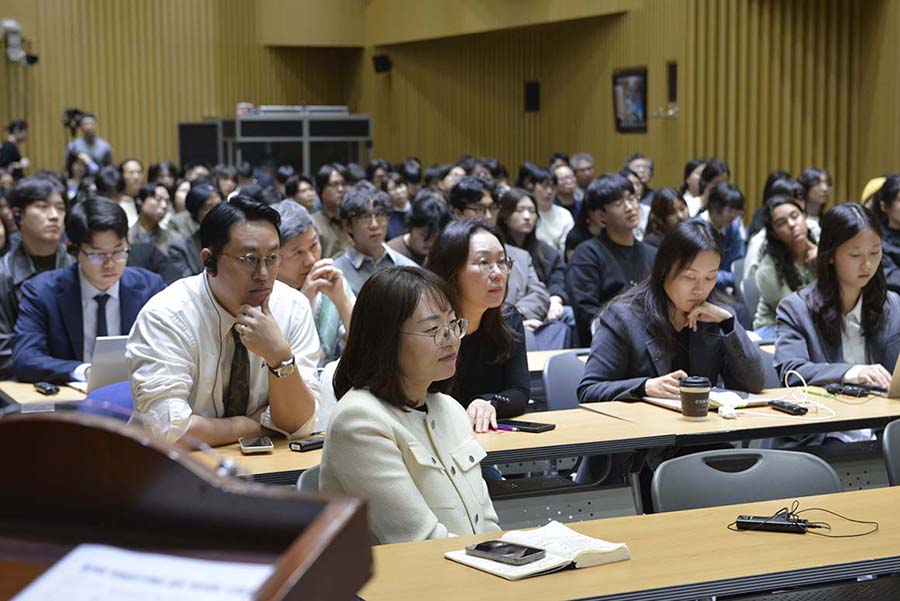
YH: You’ve visited Korea multiple times since the early 2000s.
PC: Yes, this is my fourth visit. I first came in 2003 for an exhibition, then returned a few times to give lectures.
YH: So, you’ve witnessed Seoul’s rapid transformation firsthand. Recently, Seoul has seen a surge in landmark projects by global architects like Zaha Hadid, Morphosis, UNStudio, MVRDV, Herzog & de Meuron, and Thomas Heatherwick. They’re making their mark and bringing once-imagined forms to life. How do you feel about these changes?
PC: Zaha’s Dongdaemun Design Plaza in Seoul was particularly intense—it’s a bold statement in the city. I’ve also seen projects by Jean Nouvel and Ben van Berkel on past visits. Bringing in sophisticated, innovative architecture from abroad is important. But it’s also essential for Seoul to develop something distinctive and locally admired. Otherwise, these buildings risk becoming “flags” with no real connection to the city.
YH: Are there any architects or projects you’re particularly interested in?
PC: I’ve followed Thom Mayne and Zaha Hadid with great interest over the years. I know Thom very well—just as I knew Zaha. Thom is an incredibly stimulating individual, and he’s constantly evolving, moving further into artistic exploration and not staying within the bounds of what he’s done before. He shares many of my interests, like gadgets and innovation, and he’s very engaged in education. We’ve had countless discussions on these topics, which has deepened my respect for him even further.
YH: You’ve had an extensive teaching career across various countries and cultures. How do you think cultural diversity shapes architectural learning and practice, especially for young architects today?
PC: I’ve always embraced cultural diversity. I’ve worked with a wide range of people, often in groups where there were more non-British than British individuals. My colleagues came from places as varied as Europe, China, India, and South America, and I don’t think we’ve had any Koreans yet. (Laughs) I find it fascinating to see, for example, a Chinese team member working side by side with a Taiwanese colleague. While their countries may have political differences, they’re chatting and getting along, putting aside any tension that might exist on a political level. One of my best employees happens to be a lesbian—why not? I’m also married to someone whose first language isn’t English, which adds another layer of diversity to my life.
I think diversity is often seen as something complex or overwhelming, but to me, it’s always been natural. I don’t consciously focus on being “diverse for diversity’s sake.” It’s simply the reality of the world I work in, and I believe it brings tremendous value.
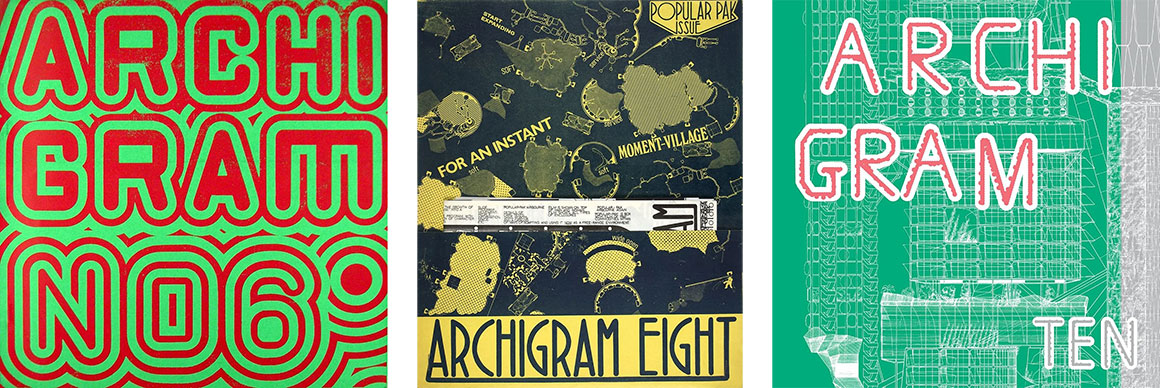
YH: You mentioned that young architects should attend at least two different architecture schools, work in at least two different countries, and not just rely on what the elders tell them—they need to get out and see the world for themselves.
PC: Experiencing different cultures broadens your perspective and deepens your understanding of architecture’s potential. I also think it’s beneficial for young architects to explore jobs outside of architecture—it can bring fresh insights to their work.
YH: I agree. I’m an editor now, but I studied architecture, and there was a time when not going into design after my studies felt almost like a transgression. After much deliberation, I chose to become an editor, and I’m convinced it was the right decision a hundred times over. Many professors, however, still advise against pursuing alternative careers and encourage students to focus solely on design work. I believe architecture students should feel empowered to explore different career paths and not confine to architectural practice. After all, architecture is rooted in the humanities.
PC: I think having an architectural background is an excellent foundation for other careers, especially in fields like communication. Architecture trains you to think spatially and analytically, and those skills translate well into so many areas.
YH: You’ve had experience in fields outside of architecture, such as editing and filmmaking.
PC: I like seeing people venture off the beaten path. There’s so much to learn and contribute outside of direct architectural design. It’s a very valuable experience for young architects to spend time doing something else if it’s not for them.
I’ve also worked as an editor and a writer, and I even made a film for television. Making a film was fascinating—it’s surprisingly similar to creating a building. Editing, whether for print or film, is a complex, enjoyable process. Working in television was particularly enlightening, but incredibly time-consuming. I created a documentary about architecture for German television, where I filmed architects like James Stirling at his home in England and Raimund Abraham in New York. In Berlin, I interviewed local architects, and one of them played the harpsichord, so we included that music in the piece. It was creatively fulfilling, though I quickly learned why making television is so costly and time-consuming. There are endless retakes, issues with interviews, and camera errors that all add up.
YH: You’ve made a name for yourself as a critic. You know something about writing.
PC: Yes, writing, too, is a skill I find valuable. I write quite easily and approach it almost like a journalist—quickly and intuitively. I may not be the best at deep research, but I can produce a thousand words in a morning. On a slow day, maybe 800; on a good day, 1,200. If someone needs an article of exactly 850 words, I can hit that mark precisely. It’s a skill I’ve come to enjoy, very much in the spirit of journalism.
YH: I’d love to have you as a critic or writer for our magazine sometime soon.
PC: Sure, anytime.
YH: Oh, and I remember your distinctive look—those blue glasses and red pants! Your outfit was fantastic.
PC: (Laughs) Yes, it’s a bit of a pattern for me! I suppose those choices do stand out, but I enjoy adding something interesting, a bit of texture or color, to life. Just like in architecture, sometimes the surface details leave a lasting impression. Ah, and I must say, I like your pink laptop!
YH: Thank you so much for sharing your insights. It’s inspiring to hear about your journey and thoughts on the future of architecture.
PC: It’s been a pleasure. I’m glad to share.


